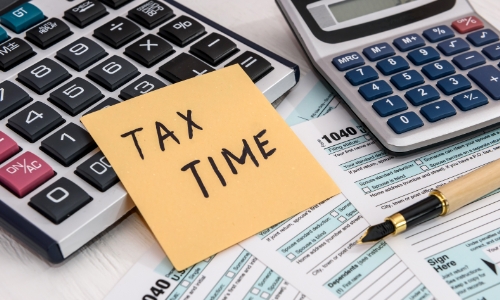
One of the biggest surprises for new power washing business owners is how tricky taxes can get when you’re working in a seasonal industry.
For many companies, revenue skyrockets during the warmer months and slows down (or stops) during the colder season. If you’re not prepared, tax time can hit hard—and your cash flow might not be able to keep up. 😬📉
In this article, we’ll break down how to plan for taxes when your income fluctuates throughout the year, and how to avoid getting caught off guard when the IRS comes knocking. 🚨🧠
🧼 Why Power Washing is a Seasonal Business
Depending on where you live, you may only operate full-time 6 to 9 months out of the year.
- In northern climates ❄️: Winter may bring a full stop to your outdoor operations.
- In southern states ☀️: You might be able to work year-round but see surges in spring and summer.
- Even in mild regions: Weather patterns still impact job flow.
When income comes in bursts, but expenses continue year-round (equipment payments, insurance, storage, etc.), it can lead to cash flow gaps—and tax mismanagement. 🧾📆
📊 Step 1: Understand How You’re Taxed
If you’re a solo operator or running a small crew, you’re likely structured as one of the following:
- Sole Proprietor
- LLC (Single Member or Multi-Member)
- S-Corporation
Here’s how taxes typically work for each:
| Business Structure | How Taxes Are Paid |
|---|---|
| Sole Proprietor | Through personal return (Schedule C) |
| LLC | Pass-through to owner(s) |
| S-Corp | Salary + pass-through distribution |
In all of these cases, you are responsible for setting aside and paying taxes, including:
- Federal income tax
- Self-employment tax (Social Security & Medicare)
- State income tax (if applicable)
These are not withheld automatically like a traditional paycheck. That means you need to estimate and pay them yourself. 🧮📤
💸 Step 2: Set Up Quarterly Estimated Tax Payments
Here’s where many seasonal entrepreneurs get burned: you’re required to pay estimated taxes quarterly—even if you make all your money in a few months of the year.
The IRS expects payment by these dates:
- April 15
- June 15
- September 15
- January 15 (of the following year)
Even if you make $0 in January through March, you’re still expected to make a Q1 payment based on the prior year’s income.
👉 Solution: Work with a tax pro to file Form 2210 and annualize your income. This lets the IRS recognize that your income is seasonal and spreads out your tax liability more fairly.
🏦 Step 3: Create a “Tax Holding” Bank Account
To avoid being caught short, set up a dedicated tax account at your bank.
Every time you get paid, transfer 25% to 30% of that revenue into your tax account immediately. 💳💰
This builds discipline and keeps your operating account from getting drained at tax time.
Some apps like QuickBooks Self-Employed or Found even help you calculate and auto-transfer these funds as you earn.
📈 Step 4: Track Seasonal Income Patterns
Use your invoicing system or accounting software to review past years. Identify:
- Peak months (March to August for many)
- Off-season (October to February)
- Average monthly revenue
Understanding your patterns helps you plan tax payments better and allows you to defer unnecessary spending during busy months.
Example:
- If you earn $80K from April to September, but only $10K the rest of the year, don’t spend like you’re making $90K year-round.
- Build your quarterly estimates around when the income is actually earned.
🧾 Step 5: Maximize Deductions Strategically
In a seasonal business, deductions can save your tax bill—especially during high-income months.
Don’t miss these common power washing write-offs:
- Pressure washing equipment and repairs 🧽🔧
- Chemicals and supplies 💦
- Gas, mileage, or vehicle depreciation 🚚
- Uniforms, gloves, and safety gear 🧤
- Marketing, website, and business cards 💻
- Storage units for off-season 🏢
- Software subscriptions (like CRM or accounting tools) 📱
💡 Pro Tip: Prepay certain expenses at year-end (like insurance or supplies) if you’re having a big season and want to reduce taxable income.
🧠 Step 6: Consider S-Corp Election (When You’re Ready)
If your net profit exceeds $50,000 to $75,000/year, you may benefit from becoming an S-Corporation.
Why?
- You can pay yourself a reasonable salary
- Distributions above that salary aren’t subject to self-employment tax
- This can save thousands in taxes annually
Downside: You’ll need to run payroll, file extra forms, and follow tighter bookkeeping—but the savings are often worth it.
✅ Talk to a CPA to see if this move makes sense for your stage of business.
❄️ Step 7: Budget for Off-Season Taxes
Even if you’re not working in January, your Q4 estimated tax payment is due on January 15.
Here’s how to prepare:
- Use part of your late-summer income to cover January’s tax hit.
- Forecast your entire tax liability before winter hits.
- Don’t spend your October-December income assuming you’re done for the year.
🎯 The goal: Be ready to pay Uncle Sam even when your power washer is in storage.
📑 Step 8: Work With a Tax Professional
Yes, you can file taxes yourself using tools like TurboTax—but if you:
- Have multiple sources of income
- Employ workers or subcontractors
- Are scaling or switching to an S-Corp
- Operate in multiple states
… then working with a tax pro can save you money and headaches.
A good CPA will help you:
- Estimate taxes based on seasonal income
- Structure your business efficiently
- Maximize your deductions
- Avoid penalties
🧠 Think of it as an investment, not a cost.
🔚 Final Thoughts
Taxes don’t have to be scary—even in a seasonal business. With smart planning and the right tools, you can:
- Stay compliant
- Avoid penalties
- Maximize savings
- And stay profitable year-round
✅ Set aside tax funds with every payment
✅ Pay quarterly based on your actual income flow
✅ Track deductions and patterns carefully
✅ Plan for the off-season like a pro
By getting ahead of your taxes, you’ll keep more of your hard-earned revenue—and sleep better when winter hits. 💤❄️💵
Browse Amazon Here For Top Rated Power Washers And Accessories






